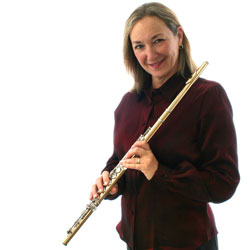|
Symphony
SRS SEASON ENDS WITH RESOUNDING TA-TA-TA-BANG
by Terry McNeill
Sunday, June 1, 2025
Symphony
YOUTHFUL VIRTUOSITY ON DISPLAY AT USO'S MAY CONCERTS
by Peter Lert
Saturday, May 17, 2025
Symphony
MYSTICAL PLANETS AND LIVELY GERSHWIN ORTIZ AT FINAL SRS CONCERT
by Peter Lert
Sunday, May 4, 2025
Symphony
VSO'S CONCERT MUSIC OF TIME, MUSIC OF PLACE
by Peter Lert
Sunday, April 27, 2025
Choral and Vocal
VOCAL ELEGANCE AND FIRE AT THE 222'S RECITAL APRIL 26
by Pamela Hicks Gailey
Saturday, April 26, 2025
CANTIAMO SONOMA SINGS AN INSPIRED GOOD FRIDAY MOZART REQUIEM CONCERT
by Pamela Hicks Gailey
Friday, April 18, 2025
DRAMATIC SHOSTAKOVICH SYMPHONY CLOSES PHILHARMONIC'S 25TH SEASON
by Terry McNeill
Sunday, April 13, 2025
LARGE COLLEGE OF MARIN AUDIENCE GREETS STOPHER ARTISTRY
by Terry McNeill
Saturday, April 5, 2025
Chamber
FRISSON DELIVERS SHIVERS OF DELIGHT
by Abby Wasserman
Sunday, March 30, 2025
OLD AND MOSTLY NEW IN SRS MARCH CONCERT IN WEILL
by Peter Lert
Saturday, March 22, 2025
|
 |
 Flutist Kathleen Reynolds |
NUMINA CENTER EVENT ENDS CONCERT SEASON
by Terry McNeill
Sunday, June 28, 2009
When does the local concert season actually end? Well, it usually is just before July 1, and it’s usually a hot day. Both benchmarks were satisfied June 28 when Santa Rosa’s Numina Center produced the last concert of the 2009 season, a chamber pot pourri, before 125 appreciative listeners.
Copland’s “As It Fell Upon A Day”, a c. 1923 bagatelle for clarinet, flute and soprano, began the program with insouciant flair. Joined by Santa Rosa Symphony musicians Roy Zajac (clarinet) and Kathleen Reynolds (flute), soprano Carol Menke gave a stylish performance that bantered with the two wind instruments. Written in 1923, just before the composer’s seminal Piano Variations, the piece fell gracefully on the ear and echoed the early English harmonies graced by the words from seventeenth-century poet Richard Barnefield.
Reynolds returned with pianist Norma Brown for one of the afternoon’s highlights, Southern California composer Michael Ruszczinski’s “Poem” (1996) for Flute and Piano. Here all the artistry of Reynold’s richly-colored tone was displayed, from the first note (a lovely decrescendo trailing off to piano) to the ethereal ending of the 10-minute work. It was a ruminating journey with varied degrees of attack, a sterling altissimo register and a chaste vibrato. There was not much for the piano to do in this work, giving only sporadic introductory or complimenting phrases. Ruszczinski’s music (not to be confused with the better-known composer Robert Muszynski) was not known before to me, and should have been.
Concluding the first half was a Mozart Trio in E Flat, K. 498, for the odd combination of piano, clarinet and viola. Violist Jennifer Sills met Brown and Zajac on even terms in the three-movement work, probably from 1786. One didn’t miss in this Trio the usual violin’s vocal line as Zajac sang vividly, albeit with judicious tempos. As with the piano sound throughout the day, clarity was lost in the lower registers due to an inadequate instrument. This is a charming work, the opening Andante showcasing a theme which was copiously varied. The Menuetto, although more forceful, carried forward the texture of the first movement, as did the finale. In the last Sill’s viola assumed a cello line at times, to fine effect, and the modulations at surprising times led to a summery conclusion.
Stravinsky wrote his Three Songs from Shakespeare in 1953, and again it was a novel combination of musicians: mezzo soprano, flute, clarinet and viola. These works stem from the time the Russian master was incorporating tone rows into his music. The viola’s plucked strings provided a spicy background to the nearly expressionist “sprechstimme,” reminiscent of Schonberg and Weill. The second song, “Full fadom five,” was based on the play “The Tempest” and ended sadly, Menke catching just the right measure of nostalgia.
Menke remained on stage and accompanied by Brown sang three songs from a composer she has been associated with for a lifetime, Schubert. Only one song was new to Menke’s public repertoire, the E-Flat Major “Lambertine”, from 1815 with words by Josef Stoll. More familiar fare included “Der Neugierige” (the sixth from the cycle “Die Schöne Mullerin”) and “Liebe Schwärmt auf allen Wegen.” All received Menke’s usual careful attention: crystal clear diction, seamless legato and deft characterization of love lost and happily found. Is there a North Bay soprano that sings as often and as well as Carol Menke?
The concert ended with another arcane chamber work, Florent Schmitt’s Sonatine et Trio, Op. 85, for clarinet, flute and piano. Schmitt’s music always seems ready for wider popularity, as with contemporaries Vierne and Françaix, but few outside of France know anything but a few orchestral pieces. Opus 85 is an upbeat work and received a lively interpretation, the opening moving briskly with Zajac in the forefront. There are bits of Impressionism scattered throughout, especially in the chromatic Assez zif second movement with its bantamweight ending, and all went smoothly. Reynolds and Zejac played a fetching and dreamy duet in the third movement, contrasting the exciting Animé that closes the piece. Here Brown’s undulating piano line deftly supported the clarinet and flute, both trading off short phrases and often playing unisons.
Billed as an “Artful Afternoon,” the concert concluded with a display of provocative African landscape photography by Lisa Gershman and a sumptuous outside buffet. The Numina Center covered all the bases, and will do it again August 23 with the same participants, save for Laura McLellan’s cello replacing the viola. The paintings that Sunday will be by artist Boris Illyin.
|
